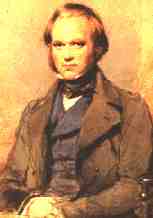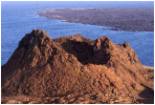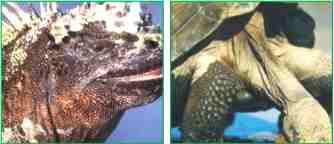|
GALAPAGOS ISLANDS - 4th Port of Call - SUNSHINE ROUTE
|
||||||||||||||||||||||||||||||||||||||||||||||||||||||||||||||||||||||||||||||||||||||||||||||||||||||||||||||||||||||||||||||||||||||||||||||||||||
|
The Galapagos Archipelago is a cluster of some 13 volcanic islands in the Pacific Ocean about and associated islets and rocks located just under the equator, about 600 miles west of Ecuador in South America. The oldest of the islands are about 4 million years old and the youngest are still in the process of being formed. The Galapagos islands are considered to be one of the most active volcanic areas in the world.
There are 13 large islands, 6 smaller ones and 107 islets and rocks, with a total land area of about 8,000 square kilometres. The islands are volcanic in origin and several volcanoes in the west of the archipelago are still very active. Galapagos is a province of the Republic of Ecuador and five of the islands are inhabited, with a total population of around 18,000 people. The capital is Puerto Baquerizo Moreno on San Cristobal Island, although the largest town is Puerto Ayora on Santa Cruz.
The islands were discovered by chance in 1535 when father Tomas Berlanga, the bishop of Panama sailed to Peru to settle a dispute between Francisco Pizarro and his lieutenants after the conquest of the Incas. The bishop's ship stalled when the winds died and strong currents carried him out to theGalapagos. In his account of the adventure, he described the harsh, desert-like condition of the islands and their trademark giant tortoises. He wrote about the marine iguanas, the sea lions and the many types of birds. He also noted the remarkable tameness of the animals that thrill and delight modern visitors.
Most people associate the Galapagos Islands with giant tortoises, small brown finches, and the visit of young Charles Darwin on HMS Beagle. The islands have become famous as a 'natural laboratory of evolution' in which scientists can study questions relating to the formation of new species.
Charles Darwin was the first to make a scientific study of the islands in 1835. He was a young student just out of university and was the naturalist on a round-the-world scientific and geographical voyage on board HMS Beagle (1831 - 1836) with Captain Fitzroy. Darwin had spent the previous four years exploring the geology and wild-life of South America. In later life, Darwin maintained that the Galapagos were the source of all his ideas and research and, of all the visitors there, the Galapagos are today most closely associated with Darwin.
Charles Darwin
Darwin made extensive collections of the plants and animals and was struck by the fact that closely related species were found on different islands, although he didn't realise the significance at the time and in some cases failed to label his specimens with their island of origin. After many years of research and thought he published The Origin of Species in 1859, which put forward the concept of evolution by natural selection. The importance of this theory, and of Galapagos, in the history of science cannot be over-estimated. As Darwin wrote; 'in that little world within itself...we seem to be brought somewhat near to that great fact - that mystery of mysteries - the first appearance of new beings on this earth.'
In 1959, Ecuador designated 97% of the land area of Galapagos as a National Park, and then in 1986 the Galapagos Marine Resources Reserve was established, protecting the waters around the archipelago. The Galapagos Marine Reserve was created in 1998, by the Special Law for the Conservation and Sustainable Use of the Galapagos Province. The islands have been recognised internationally as a Man and Biosphere Reserve, and as a World Heritage Site by UNESCO. In December 2001, the Marine Reserve was also designated a World Heritage Site.
According to most recent data, the Galapagos Marine Reserve covers roughly 138,000 square kilometres (the increase over the past years is due to improving precision with respect to coastline mapping). This area includes the inner waters (enclosed by the base-line, i.e. the hypothetical line linking the outer edges of the islands) plus 40 nautical miles measured from the 'base-line'. The coastline totals 1667 km. In addition, around the 40-mile-zone, there is a 20-mile-zone of 'minimum protection'.
The Charles Darwin Foundation (CDF) was contracted by the Government of Ecuador over 40 years ago to provide the scientific input into the management of the Galapagos National Park. The Park and the Charles Darwin Research Station (the scientific arm of the CDF) have collaborated closely over the years in a successful example of co-operation between national and international agencies. Their offices are within walking distance of each other in Puerto Ayora. The Galapagos Conservation Trust and the other Friends of Galapagos organisations are affiliated to the CDF.
Galapagos had no aboriginal inhabitants and was only officially discovered in 1535 by Tomas de Berlanga, the Bishop of Panama, when his ship was becalmed and carried there by currents. During the 17th and 18th centuries, buccaneers and pirates used the islands as a staging post, stocking up on water and giant tortoises which they stowed alive on board their ships for fresh meat, before carrying out raids on the South American coast. During the 19th century whalers and fur sealers further exploited the islands. Galapagos was annexed by Ecuador in 1832 and small colonies were gradually established on several of the islands. In the 1930's several mysterious deaths and disappearances among the European community on the island of Floreana put Galapagos in the news. Most of the present-day inhabitants moved to the islands from the Ecuadorian mainland during the last 20 years - until the Special Law for Galapagos was passed the population was increasing at more than 8% per annum.
Galapagos is home to many unique, endemic animals, most of which are fearless due to the lack of natural predators. One of the best known, the giant tortoise, has evolved into fourteen distinct forms on the different islands of the archipelago. Other reptiles include the marine iguana which grazes on seaweed, land iguanas, lava lizards, geckos and snakes. The only terrestrial mammals are rice rats and two species of bat. The 13 species of small, brownish finches are adapted to a range of different foods and are known collectively as Darwin's finches. They have been important to scientists trying to understand how evolution occurs, and include the tool-using woodpecker finch. Other endemic (only found in Galapagos) land birds include a hawk, dove, flycatcher, rail and four species of mockingbird.
Marine Iguana and Giant Tortoise
Among the endemic sea birds are a flightless cormorant, two species of gull, and the only penguin species which lives in tropical waters. The waved albatross breeds solely on Espaρola Island, while colonies of blue-footed, red-footed, and masked boobies are found alongside frigatebirds. Sea lions and fur seals are found around the coasts, while dolphins, whales and sea turtles are common. Over 300 species of fish have already been described from the rich ocean waters around the archipelago. There are also at least 1,600 species of insects, 80 spiders, 300 beetles, 150 mites, 80 land snails, 650 sea shells and other molluscs, 200 starfishes and urchins, 120 crabs, and many other smaller animals.
The plants of Galapagos are equally fascinating. In the highlands are many species of endemic Scalesia ('tree daisies') as well as tree ferns, bromeliads and orchids. Around the coasts are giant prickly pear and candelabra cacti while tiny Brachycereus cacti grow on barren lava flows. On the shores can be found vivid morning glories and mats of bright red sesuvium. Galapagos also has its very own, endemic species of cotton, tomato, pepper, guava and passion flower. Many kinds of plants, particularly those belonging to the daisy family, have evolved on the different islands into whole arrays of endemic species, providing scientists with classic examples of what is known as 'adaptive radiation'.
Although 97% of the land area of Galapagos is protected as a national park, it suffers from some serious conservation problems. Early settlers brought in domestic animals and plants which have spread across large parts of the archipelago, often becoming wild or 'feral', and have a detrimental effect on the native flora and fauna. Goats compete for grazing with native herbivores such as tortoises and iguanas, and on some islands have devastated the natural vegetation. Feral dogs and cats prey on iguanas and sea bird chicks. Rats and pigs eat the eggs of tortoises, turtles and sea birds. Some introduced plants are seriously threatening the survival of native species. Personnel from the National Park and the Research Station have waged campaigns to eradicate these alien species for many years, but the process is difficult and expensive, especially on the larger islands. They are also breeding endangered species in captivity which are then returned to help boost wild populations.
More recently, illegal fisheries for sharks, lobsters, and sea cucumbers have been operating in the marine reserve, not as local artisanal fisheries but for export to countries in the Far East and elsewhere, many of which are also funding the operations. This has highlighted the need for effective patrolling of the National Park and Marine Reserve. Many of the solutions are expensive and funds are urgently needed.
GALAPAGOS LINKS:
Home | About Us | Newsroom | Membership | Conservation | Galapagos Islands | Kids Corner | Links | Contact Us | Site map
The Charles Darwin Research Station conducts and facilitates research in the Galapagos Islands and the Galapagos Marine Resources Reserve of Ecuador. The Darwin Station is part of the Charles Darwin Foundation for the Galapagos Islands, an international non-profit organization dedicated to scientific research in the Galapagos Islands since 1959.
The Darwin Station provides:
Information and technical support for the Galapagos National Park Service and other branches of the government of Ecuador. Support for the resident and visiting scientists who work in Galapagos. Environmental education for island communities and schools and for the visitors that come to Galapagos each year.
Galapagos Conservation Trust is a British registered charity set up to raise funds for, and awareness of, the conservation needs of the Galapagos Islands. It was launched in April 1995 at the Royal Society in London. The Trust is affiliated to the Charles Darwin Foundation and is a member of the international network of Friends of the Galapagos.
Galapagos Coalition, a group of biologists, other scientists, and lawyers with expertise in environmental and international law, many of whom have done research in the Galapagos and all of whom are interested in the understanding of the relationship between the conservation of Galapagos and human activities.
IGTOA, The International Galapagos Tour Operators Association is a federation of companies who have a commitment to preserve the Galapagos as a unique world heritage that can provide education, adventure and inspiration to future generations of travelers. Members contribute from their profits to fund projects identified by the Galapagos National Park Service and the Charles Darwin Research Station. Located in the USA at P.O. Box 915, Ithaca, New York 14851
PBS Voyage to the Galapagos Scientific American Frontiers - website containing numerous links to educational topics from this PBS show. You can find information from Darwin's finches and marine iguanas to the Galapagos penguins.
IMAX 3D "Galapagos" Let IMAX take you down to Galapagos in 3D. Find out all about the film and where it is currently showing.
Visiting
Scientists
Botany
Herbarium
Solar Cola drinkers care about planet earth
.. Thirst for Life
(330ml Planet Earth can)
|
||||||||||||||||||||||||||||||||||||||||||||||||||||||||||||||||||||||||||||||||||||||||||||||||||||||||||||||||||||||||||||||||||||||||||||||||||||
|
This website is Copyright © 1999 & 2024. The bird logo and name Solar Navigator are trademarks. All rights reserved. All other trademarks are hereby acknowledged. Max Energy Limited is an educational charity.
|




